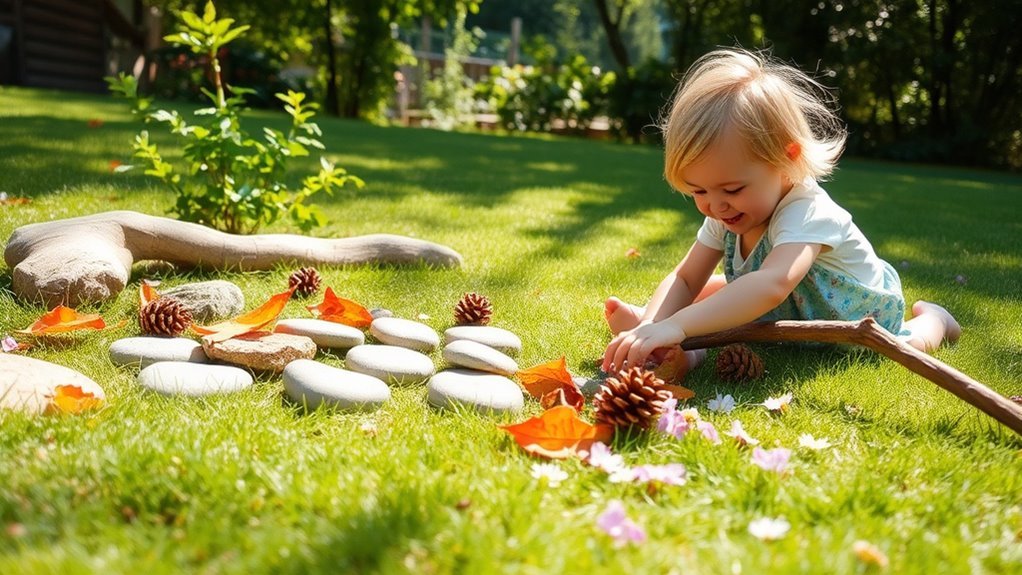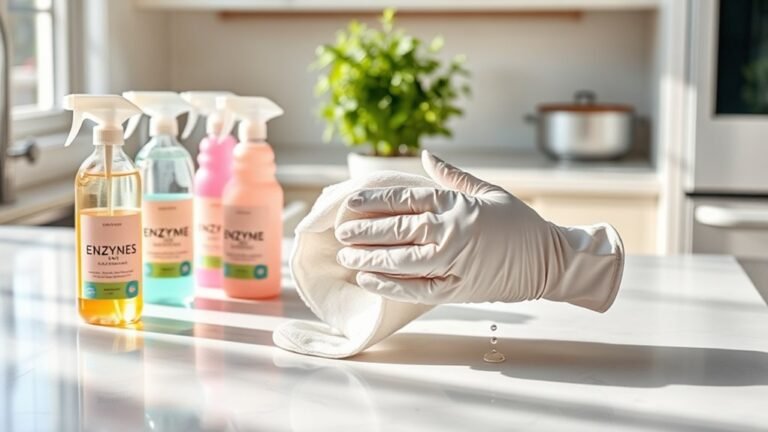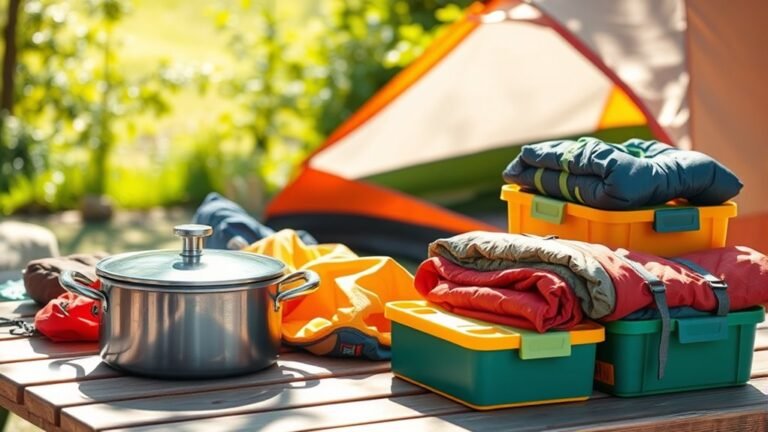Natural Alternatives to Toys
If you want safer, eco-friendly options, natural toys are a great choice. They’re made from renewable materials like wood and organic fabrics that engage your child’s senses and creativity. From soft rattles for infants to wooden blocks for toddlers and puzzles for preschoolers, there’s something for every age. These toys are durable, easy to care for, and support sustainability. Keep exploring to discover how natural toys can enrich your child’s playtime and growth.
Benefits of Choosing Natural Toys

Although synthetic toys are widely available, choosing natural toys offers several unique benefits. When you opt for natural options, you’re making a conscious choice that reduces your sustainability impact, helping protect the planet for future generations. These toys often come from renewable resources, breaking away from the disposable culture synthetic toys encourage. Plus, natural toys engage your child’s senses in ways plastic simply can’t. The textures, smells, and even slight imperfections spark sensory development, fostering creativity and exploration. You’re not just handing over an object; you’re giving your child the freedom to connect deeply with their environment, encouraging imaginative play without the constraints of mass-produced designs. Choosing natural toys means embracing a lifestyle that values authenticity, sustainability, and meaningful growth.
Popular Materials for Natural Toys
When you choose natural toys, the materials they’re made from play a big role in their benefits and appeal. Wooden creations are a favorite—they’re sturdy, safe, and bring a warm, earthy feel that synthetic toys can’t match. These toys often feature smooth finishes and simple designs, encouraging your child’s imagination to soar freely without distractions. Organic fabrics are another excellent choice, offering softness and breathability without harmful chemicals. They’re perfect for plush toys, comfort items, or dress-up pieces that feel good against the skin. Both wooden creations and organic fabrics connect your child more closely to nature, supporting a lifestyle that values authenticity and sustainability. Opting for these materials means you’re not just picking toys—you’re embracing freedom from artificial and disposable options.
Types of Natural Toys for Different Age Groups

Since children’s needs and interests change as they grow, choosing natural toys that suit their developmental stage is key. For infants, sensory play with soft, organic cotton or wooden rattles helps develop touch and sound awareness. Toddlers benefit from wooden building blocks that encourage creativity and hand-eye coordination while offering open-ended play. Preschoolers can explore more complex wooden building sets and natural puzzles that challenge problem-solving skills. For older kids, natural materials like wooden building kits or nature-inspired craft sets support fine motor skills and imaginative freedom. By matching natural toys to your child’s growth, you foster exploration and independence without overwhelming them. This way, you give them the freedom to engage deeply in play that respects both their development and the environment.
How to Care for and Maintain Natural Toys
Choosing the right natural toys for your child’s age is just the start; keeping those toys in good condition guarantees they stay safe and enjoyable over time. You’ll want to adopt simple cleaning methods like wiping wooden toys with a damp cloth or using gentle soap and water for fabric pieces. Avoid soaking or harsh chemicals that can damage natural materials. After cleaning, let toys air dry completely to prevent mold. When it comes to storage solutions, opt for breathable baskets or cloth bags to keep toys organized and moisture-free. Storing toys away from direct sunlight preserves their color and integrity. With these easy care habits, your natural toys will remain durable and ready for your child’s creative adventures, giving you the freedom to focus on fun instead of upkeep.
Where to Find Quality Natural Toys

Although natural toys have grown in popularity, finding high-quality options can still be a challenge. When you’re searching, focus on stores and brands committed to eco friendly options—these often guarantee non-toxic, sustainable materials. Look for clear sourcing tips on product labels or websites, so you know where and how materials are obtained. Local craft fairs and artisan markets can also be goldmines for unique, handmade natural toys that support small businesses. Don’t hesitate to ask sellers directly about their sourcing practices; transparency is key. By staying informed and intentional, you’ll find toys that not only bring joy but also respect the planet, offering your child freedom to explore with peace of mind.
Frequently Asked Questions
Are Natural Toys Safe for Children With Allergies?
When you’re thinking about safety for kids with allergies, allergy considerations are key. You’ll want to check the materials carefully because some natural fibers or woods might still trigger reactions. Material sourcing matters a lot—knowing where and how the toy’s made helps you avoid hidden allergens. By choosing thoughtfully, you’re giving your child freedom to play safely, without worrying about allergic reactions or harmful chemicals. Always read labels and ask questions before buying.
Can Natural Toys Be Used Outdoors?
Imagine your little one running free, toy in hand, without a worry in the world. Can natural toys keep up? Yes, they can! Thanks to their outdoor durability and the strength of natural materials, these toys thrive outside. You’ll love how they withstand rough play, rain, and sun, letting your child explore without limits. So, go ahead—embrace the freedom of nature and watch those toys become part of every adventure.
How Do Natural Toys Compare in Cost to Plastic Toys?
When you look at the cost comparison between natural and plastic toys, you’ll notice some price variability. Natural toys might seem pricier upfront because they’re crafted from sustainable materials and often handmade. But you’re gaining durability and eco-friendliness, which can save money long-term. Plastic toys often cost less initially but may break faster, pushing you to buy replacements. So, it’s about what freedom means to you—immediate savings or lasting value.
Do Natural Toys Have Any Educational Benefits?
You might think toys made from plastic are the only way to spark creative play, right? Actually, natural toys can be even better for your kid’s sensory development. They often encourage imagination and hands-on exploration, unlike flashy screens or mass-produced gadgets. If you want your child to experience true freedom in learning, natural toys offer open-ended fun that helps them develop problem-solving skills and creativity without limits.
Are Natural Toys Environmentally Biodegradable?
You’ll be glad to know that toys made from biodegradable materials are a fantastic choice if you want to reduce your environmental footprint. These eco friendly options break down naturally, freeing you from the guilt of contributing to landfill waste. Choosing them means you’re embracing freedom—not just in play, but in knowing your choices support a cleaner planet. You get fun and sustainability, all in one package.






